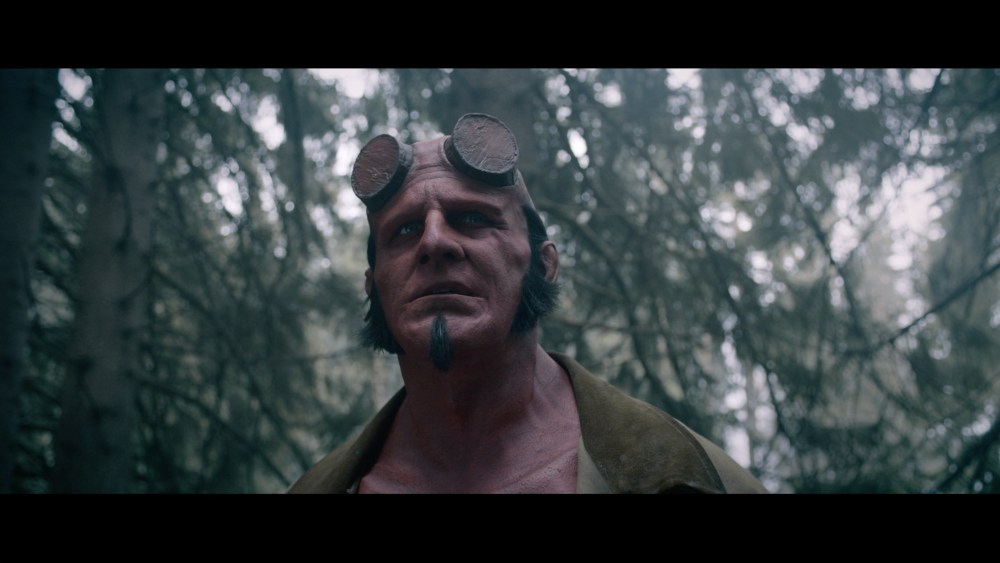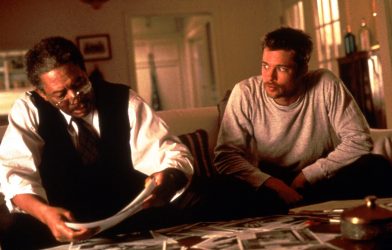While “Hellboy: The Crooked Man” is a relatively low-budget reboot, it remains hard to parse its $20 million price tag. It has the look of YouTube fan film — not to mention the excess fidelity, aping the story beats of Mike Mignola’s eponymous comic to a tee. Mignola’s screenwriting credit is therefore unsurprising, but that director Brian Taylor was at all involved is an astonishing tidbit. One half of the duo behind high-octane films like “Crank” and “Ghost Rider: Spirit of Vengeance” (not to mention his solo effort “Mom and Dad,” a dark horror comedy), Taylor has made several movies that get by on momentum and gusto. “The Crooked Man,” however, features neither.
Following Ron Perlman and David Harbor — two actors exceptionally suited for the role of Hellboy — actor Jack Kesy plays a more passive incarnation of the paranormal agent. If he quips, he does so subtly, and if he recalls secrets from his past, they don’t affect him very much in the present. However, the fault in creating this less fun and interesting version of “Big Red” lies with the script, which gives Kesy little to work with.
In 1959, after a decently engaging tussle with a giant spider aboard a train — this has little to do with the rest of the plot, but is the only major addition to the comic — Hellboy and B.P.R.D. (Bureau for Paranormal Research and Defense) rookie Jo (Adeline Rudolph) find themselves lost in the woods in rural Appalachia. From there on out, they run into several villagers whom they agree to help, since they’re tormented by local witches, and a devious figure called the Crooked Man, whose deep ties to America’s colonial sins are briefly mentioned before being discarded.
Like the aforementioned train fight, Jo isn’t part of the comics either, though she barely exists in the film. Despite being a constant physical presence, her role is to observe and sometimes comment on strange happenings as she and Hellboy are guided through the woods by local ex-soldier Tom (Jefferson White), an equally uncharismatic figure. As the trio wanders, they occasionally cross paths with folk-horror happenings, none of which plays out with visual panache. The film is plain and stilted, with no real sense of geography in the few moments that action scenes take hold.
The odd practical effect is fun to witness, like a skinsuit being reinhabited by a wandering skeleton, but the film is largely composed of rote dialogue disconnected from the image. Hellboy frequently mentions smelling evil in the air, and the stench of death in the forest, though the camera seldom captures the actual environment through which its characters tread. They walk, encounter a witch half-seen, walk some more, and encounter another — a process that becomes almost comically repetitive.
All the while, no efforts are made to ape Richard Corben’s signature comic art work, which brought a sense of unsettling caricature to every page. Nor is this substituted with any other visual inspiration. Everything that unfolds in “The Crooked Man” does so with exceptional dullness, including various psychic visions experienced by the characters, which feel more obligatory than inspired. The closer they get to facing the titular villain, the less the story seems to matter, and the less effort it seems was poured into its creation. Sven Faulconer’s score is appropriately creepy, but little, from the lighting to the costume and production design, rises to meet it.
Unlike previous Hellboy films, there’s nothing distinctive about “The Crooked Man” — nothing in its telling that denotes passion for the lead character or his idiosyncratic world. In theory, the appearance of a shoestring budget ought to have helped zero in on the comic series’ horror elements, but ironically, those have been stripped away. All that remains is the husk of the Hellboy IP.









